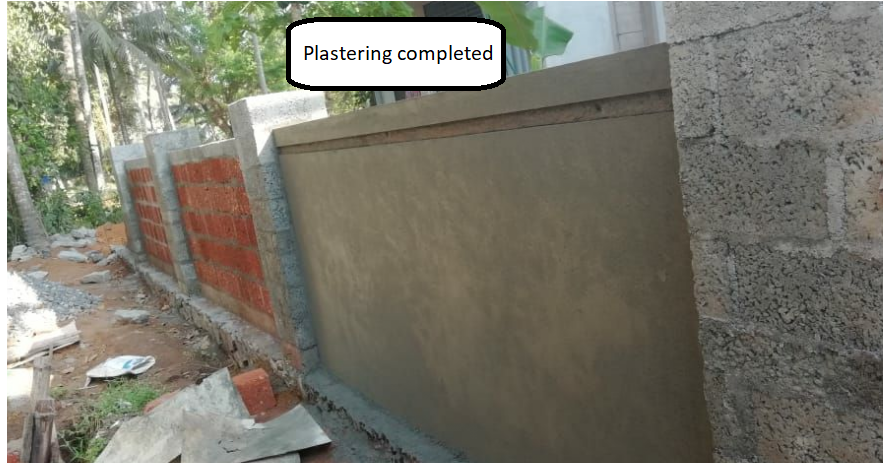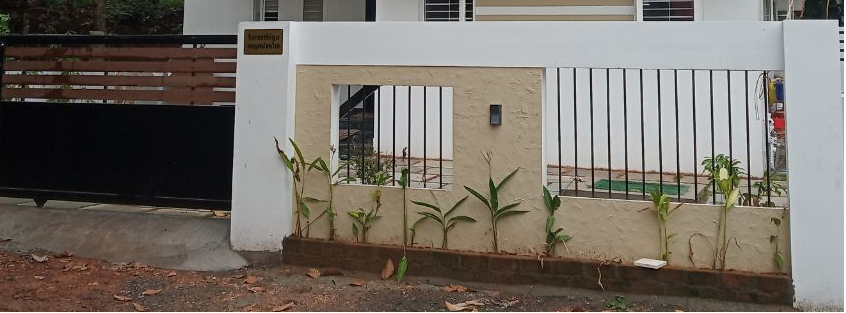A compound wall serves to delimit your home or building, ensures privacy and protection. Thus the primary purpose of a wall is security. It prevents trespassers from moving into your property and restricts entry into your personal space. The contemporary houses today are independent units using more transparent elements like glass windows and more open spaces to improve their aesthetic appeal. Therefore it is inevitable for them to have compound walls.
Compound walls allow private properties to veil themselves from the road, in terms of visibility, dust and noise pollution. Moreover, it is important to shield the ground floor of a house from the street and therefore the front fence should be of a height that fulfills this purpose.
There are different types of walls based on appearance and the type of construction material used.
Types of compound wall
- Masonry
- Ornamental
- Cladding
- Precast
- Security
1. Masonry compound wall
Masonry walls are typically constructed using laterite stones, red clay bricks or fly ash bricks, steel, and cement mortar. Construction of such walls start from 2 ft below ground level to ensure that the wall gets proper anchorage.
For individual houses, height of the masonry wall is usually between 5-6 feet with a thickness of 150mm (6 inches). After excavation, a PCC of 100 mm thickness and 600 mm width is laid to create an even surface to lay the wall. Thereafter, rubble masonry measuring 450 mm width and 2 feet height is made below the brick wall to distribute the load of the above built structure.
After curing of the masonry wall, we can apply cement plaster on both the sides of wall and finally paint is applied.

Similarly, to improve the appearance of a masonry wall, grooves can be made in the plaster.
2. Ornamental compound wall
Ornamental Compound wall is a combination of masonry wall and mild steel/stainless steel grills. In this type of wall, up to 3-5ft masonry wall is constructed. We can then apply cement plaster and paint over it.

Above this masonry wall, we can fix mild steel grills or stainless steel grills as per the decoration and security requirements.
3. Cladding compound wall
Cladding compound walls use cladding materials such as vitreous tiles, marbles or shera panels. We can fix these over typical masonry walls to give them an aesthetic appeal. However, these type of walls are more suitable for high end bungalows.

A cladding wall is generally impervious to changing weather conditions.
4. Precast compound wall
Precast walls are usually made of steel and concrete. We can make them in a factory and then transport to the site. Precast walls are used in various places as their installation is quick and easy. In addition, we can complete the whole process of installation in a short span of time.

Despite their facile installation, the strength and stability of walls can be a major concern. Therefore, we need to ensure to provide proper foundation to the structure and the walls.
5. Security compound wall
These type of walls are generally constructed at military bases, government offices and police camps where security is of utmost concern.

Security walls have a masonry wall with height more than 7 ft. Therefore, this will prevent infringement to a great extent. Usually a mild steel barbed wire fence or concertina coil is provided over the masonry wall. Alternatively, in high security areas, the fencing is electrified to avoid any encroaches.
Above all, compound walls are gaining popularity because of their widespread availability, durability, and endurance.
Have you constructed compound wall for your house or building?
This is a comprehensive guide to compound wall types, It’s great to see a detailed comparison of materials and their pros/cons. Bookmark this for future reference. For more in-depth information on each type, check out https://jrrubbermoulds.com/blog/types-of-compound-wall/